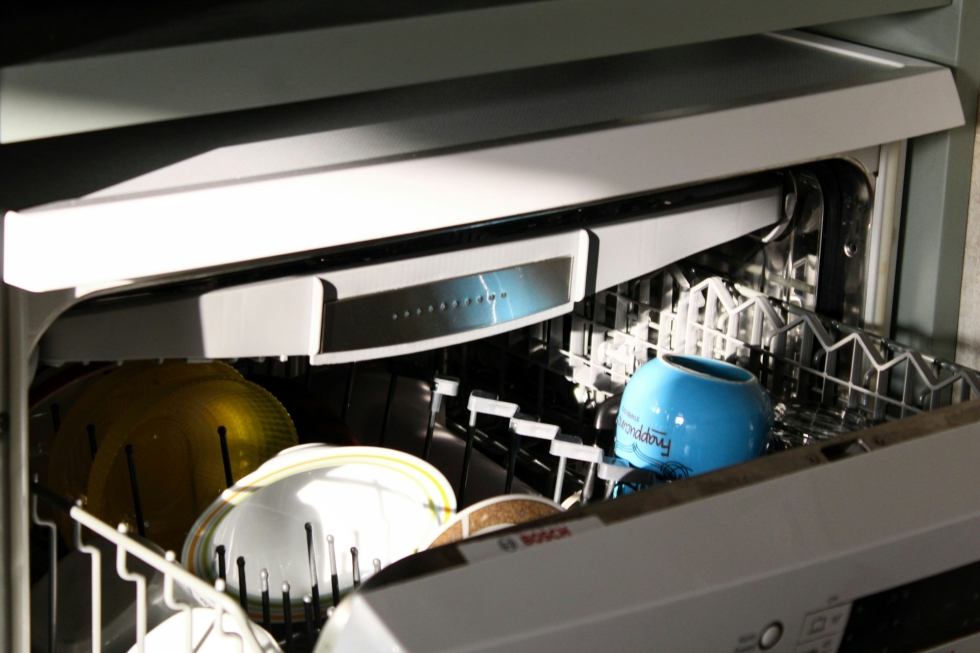
Sep
Nothing ruins the post-dinner vibe quite like opening your dishwasher to find dishes that look like they went through a light rinse instead of a proper wash. You load it up, press start, listen to all the right swooshing sounds, and then... disappointment.
Don't worry - you're not alone in this kitchen catastrophe. Most dishwasher problems aren't as mysterious as they seem. In fact, the average dishwasher lasts between 9 to 16 years, but many issues that make them underperform happen long before they completely give up the ghost.
Let's dig into what's really going on behind that stainless steel door and why your dishwasher might be phoning it in.
Water Temperature Issues That Ruin Everything
Here's something that might blow your mind: your dishwasher's cleaning power depends heavily on water temperature, and most people get this completely wrong. Water should enter your dishwasher at approximately 120°F, and then the internal heating element cranks it up to over 155°F for maximum cleaning efficiency.
Think about it this way - would you try washing greasy pans with lukewarm water by hand? Of course not. Yet many homeowners unknowingly send cold or barely warm water to their dishwashers and wonder why everything comes out grimy.
Professional Edmonton Dishwasher Repair services consistently find that temperature-related issues account for a huge percentage of cleaning complaints. Here's the kicker: if your water heater is set below 120°F, your dishwasher has to work overtime just to reach baseline cleaning temperatures.
Quick temperature test: Run hot water at your kitchen sink until it's steaming, then start your dishwasher immediately. If there's a long gap between when you last used hot water and when you start the dishwasher, the first few minutes of the cycle use cold water sitting in the pipes.
A dishwasher operating with water rated at 15 gpg can develop significant spray arm blockages within just 6-8 months of regular use, compared to minimal buildup after years of use with soft water.
Spray Arm Problems You're Probably Missing
Your dishwasher's spray arms are like tiny water jets designed to blast food particles off your dishes. When they get clogged, it's like trying to clean with a garden hose that has its thumb over half the holes.
Most people never think to check their spray arms, but they should. Food particles, grease, and mineral deposits love to camp out in those little holes, gradually reducing water pressure and creating dead zones where dishes never get properly cleaned.
Clogs That Hide in Plain Sight
Remove your bottom dish rack and take a look at the spray arm underneath. See those holes around the edges? Now imagine half of them are partially blocked with rice grains, pasta fragments, or mineral buildup. That's exactly what happens over time.
The solution is surprisingly simple: pop off the spray arms (they usually lift right out or unscrew), rinse them under hot water, and use a toothpick or small wire to clear each hole. Do this monthly, and you'll be amazed at the difference.
Signs your spray arms need attention:
- Dishes on one side of the dishwasher come out dirtier than the other
- You can see visible buildup or food particles stuck in the holes
- Water doesn't seem to reach the top rack effectively
- Strange rattling noises during the wash cycle
Marie Kondo once said, "The objective of cleaning is not just to clean, but to feel happiness living within that environment." Your dishwasher definitely fits into this philosophy - when it works properly, the whole kitchen feels more functional and peaceful.
Loading Mistakes That Sabotage Your Clean Dishes
Let's be honest here - most of us treat dishwasher loading like a game of Tetris. Cram everything in, make it fit, and hope for the best. But poor loading technique is probably sabotaging your results more than any mechanical problem.
Common loading sins:
- Overcrowding plates - Water can't circulate properly when dishes are practically touching
- Nesting spoons and forks - They stick together and protect each other from getting clean
- Blocking spray arms - Large pans or cutting boards that prevent water from rotating properly
- Face-down bowls - They fill with dirty water instead of getting sprayed clean
Here's a reality check: if you have to force something to fit, you're probably doing it wrong. Leave space between items, angle things so water can drain properly, and resist the urge to fit "just one more plate" into an already packed rack.
Energy Star-rated dishwashers use an average of 3-5 gallons of hot water per cycle, but overloading can force you to rewash items, doubling your water and energy usage.
Filter Neglect - The Silent Killer
Pop quiz: when's the last time you cleaned your dishwasher's filter? If you're scratching your head right now, you're not alone. Most people don't even know their dishwasher has a filter, let alone where to find it.
That filter is working overtime to catch food particles and prevent them from recirculating onto your "clean" dishes. When it gets clogged, your dishwasher starts operating like a washing machine filled with dirty water.
Signs Your Filter Needs Immediate Attention
Your dishwasher will give you plenty of warning signs when the filter is crying for help:
- Gritty residue on dishes - Those little specks aren't water spots; they're food particles
- Funky odors - Trapped food starts decomposing in the filter
- Standing water after cycles complete
- Visible food debris floating around during wash cycles
The filter is usually located at the bottom of the dishwasher, beneath the lower spray arm. It's a cylindrical mesh component that you can unscrew and lift out. Rinse it under hot water monthly, and use a soft brush to remove stubborn debris.
Pro tip: Never use abrasive scrubbers or steel wool on the filter - you'll damage the mesh and make it less effective.
Door Seal and Gasket Failures
That rubber seal around your dishwasher door might look like a minor detail, but it's actually crucial for proper operation. When door seals fail, you get water leaks, heat loss, and reduced cleaning efficiency.
Check your door seals regularly for cracks, tears, or warping. Food particles and grease can build up here too, preventing proper sealing. Clean the seals with warm soapy water and inspect them for damage.
Red flags for door seal problems:
- Water pooling on the floor after cycles
- Visible cracks or tears in the rubber
- Door doesn't close securely
- Steam escaping during operation
Hard water poses one of the greatest challenges to dishwasher durability, causing mineral buildup that affects everything from spray arms to heating elements. A heavily scaled heating element can take up to 30% longer to heat water and consume up to 25% more electricity.
Regular maintenance checklist:
- Clean filter monthly
- Check and clean spray arms quarterly
- Inspect door seals every few months
- Run empty cleaning cycles with vinegar every 2-3 months
- Monitor water temperature at your kitchen sink
The bottom line? Most dishwasher problems aren't actually problems with the dishwasher itself - they're maintenance issues that accumulate over time. Like Henry Ford once noted about automobiles, "You can't build a reputation on what you are going to do." The same applies to your dishwasher - you can't expect great results without proper care.
Regular attention to these common issues will keep your dishwasher running efficiently for its full 10-15 year lifespan. And honestly? Once you get into the habit of monthly filter cleaning and quarterly spray arm maintenance, it takes maybe 10 minutes total. That's a pretty small investment for consistently clean dishes and a properly functioning kitchen.
This article was produced exclusively for Muslim Link and should not be copied without prior permission from the site. For permission, please write to info@muslimlink.ca.
This article was produced exclusively for Muslim Link as part of a paid advertising package. For more information on how to advertise through Muslim Link and support the running of Canada's Online Hub go here.




